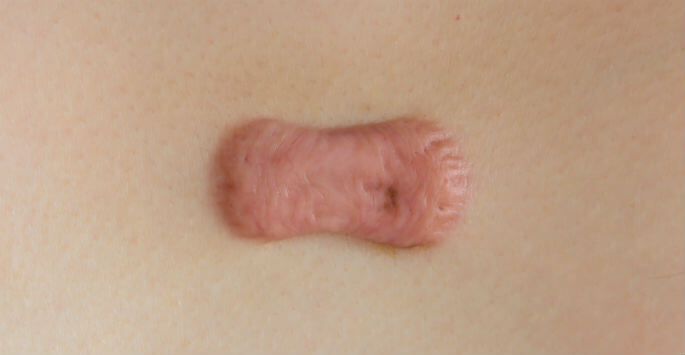An estimated 10% of people deal with keloid scars. This frustrating skin abnormality can be difficult to manage. Not only are they aesthetically unappealing; they are also notoriously difficult to get rid of. The best thing you can do to take care of current keloids and prevent future ones is to learn more about the causes, symptoms, and risk factors associated with them.
Located in Orlando, Dermatology and Skin Cancer Center is committed to providing patients with comprehensive dermatological care. We would be happy to help you understand more about keloids and the treatments that are available to you. For more information about our practice or to schedule a consultation appointment, contact us today.
What is a Keloid?
Keloids are essentially raised up, shiny, dome-shaped scars. They usually have a smooth top and are pink, red, or purple in color. What distinguishes them from normal scars is that they tend to get progressively larger over time, and do not regress without medical intervention.
Causes of Keloids
The causes of keloids aren’t entirely understood, but scientists are fairly certain that changes in cellular signals that control growth and proliferation contribute to their formation. They can develop from most skin injuries, including:
- Surgical cuts
- Acne and chickenpox blemishes or scars
- Burns
- Body or ear piercings
- Vaccination shots
- Scratches
Symptoms of Keloids
While it’s usually easy to differentiate between keloids and regular scars because of their appearance, they also tend to be itchy, tender, and painful.
These features most commonly appear on the:
- Chest
- Back
- Shoulders
- Earlobes
If you have a feature on your face that you think might be a keloid, you fortunately may be mistaken. Keloids very rarely develop on the face, so your suspected keloid may actually just be a particularly red scar.
Risk Factors
While anyone can develop keloids, certain risk factors predispose some individuals to be at a greater risk than others. People of Asian and Latin heritage are more likely to have them, as well as pregnant women and anyone under the age of 30. Aside from pregnancy being an added risk factor, women and men have an equal chance of developing these scars. Unfortunately, there’s nothing you can do to prevent them from developing. The best course of action to take if you do develop one is to get it treated as soon as possible, so it doesn’t continue to enlarge.
If you’d like more information about keloids or would like to begin investigating treatment options, contact Dermatology and Skin Cancer Center today.

